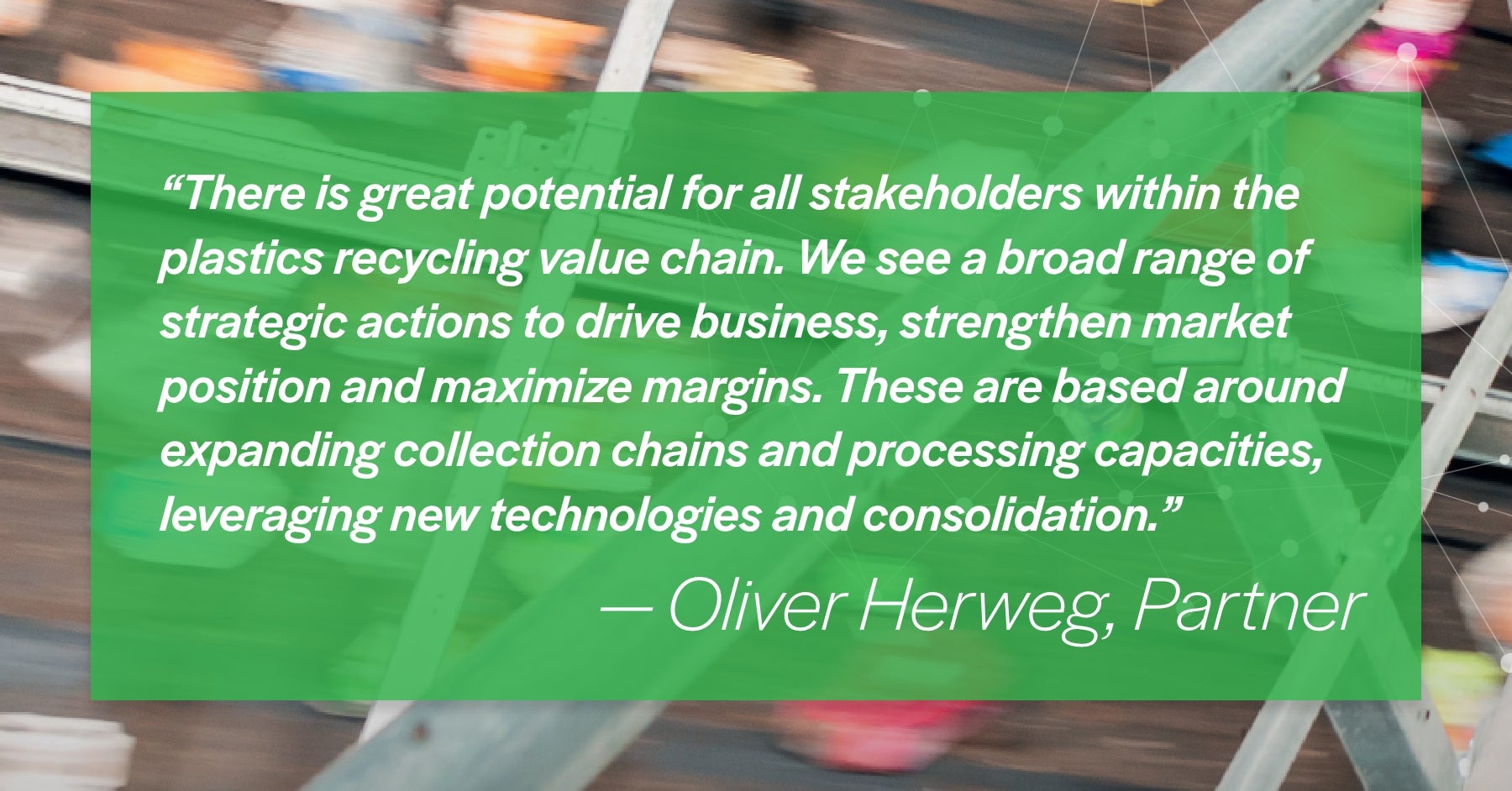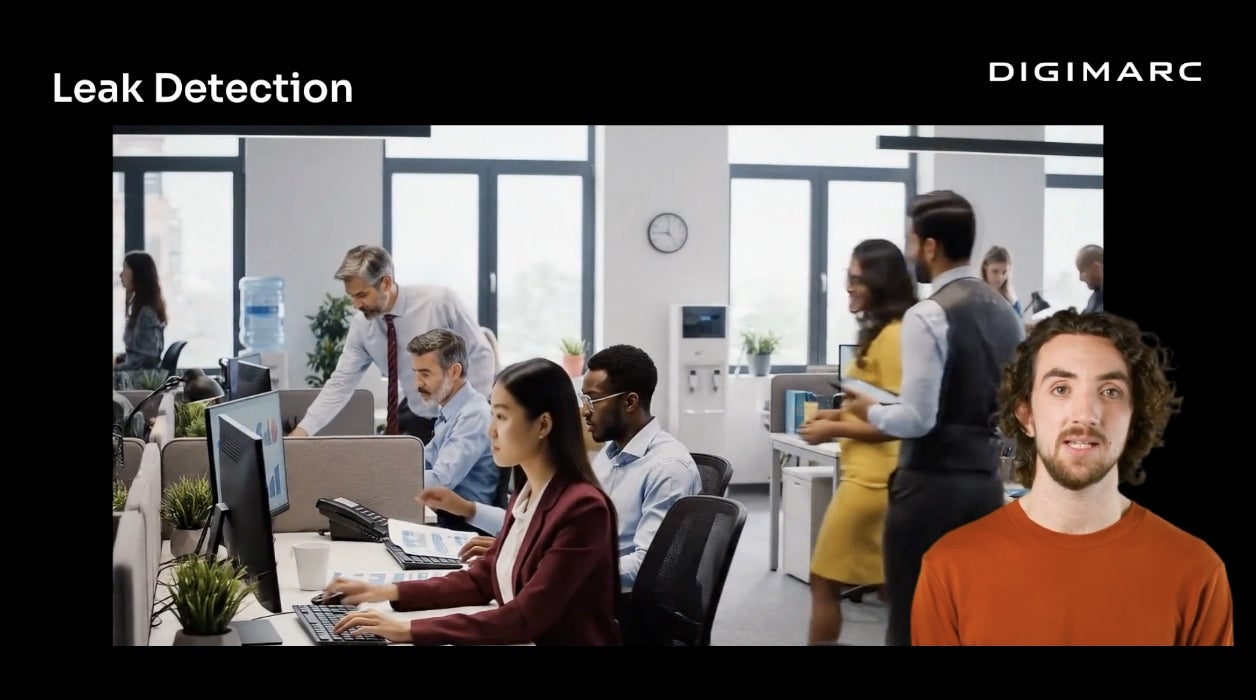As the global community continues to address the plastic pollution of our planet, we are inspired to see tangible proof of progress as outlined in management consulting firm Roland Berger’s recent report that identifies plastic recyclates as the “new gold.” Momentum is building in the European Union (EU), and Roland Berger identifies two primary drivers behind progress.
Digimarc is actively participating in both lanes – driving the adoption of technology to help consumer brands meet tightened regulations and developing innovative solutions to transform plastic waste sortation systems.
According to Roland Berger, new sorting technologies such as digital watermarks can substantially improve the yield and quality of recyclates. Several plastic recycling projects that Digimarc has played an instrumental role in lend tangible proof to this statement.
HolyGrail 2.0 (Europe) and Circular Plastics Taskforce (Canada)
Last year, the HolyGrail 2.0 project announced the results from European trials that showed that digital watermarking technology has the power to transform recycling. Digimarc’s technology achieved a 99% average detection rate across all categories of plastic packaging. The effectiveness of Digimarc Recycle has also been validated in Canada by the Circular Plastics Taskforce (CPT), again, delivering a 99% detection rate.
The results of these tests are laying the groundwork for broader rollout of this technology around the world. In Canada, the initial focus is on tackling the poorly recycled, and untapped potential, of flexible plastics. In Europe, France has been identified as the first national market to advance the adoption of digital watermarking technology and improve plastics recycling at-scale.
Why the “new gold?”
According to the report, around 50% of plastic waste is sent to landfill, 20% incinerated (waste-to-energy conversion), and another 20% littered or burned in the open.
Only 10% is recycled.
Plastic packaging takes around 250 years to naturally decompose, and plastic waste is a major environmental issue – contributing around 4% of total manmade CO2 emissions globally.
So why are recyclates the new gold? The term recyclate describes the result of a recycling process including all materials that have been completely or partially recycled to serve as the basis to produce new high-quality products. The prices of virgin plastics are directly related to the price of oil, their base material. Recyclates, although made from plastic waste and not directly correlated with oil prices, have been trading slightly above virgin plastic prices. This, according to Roland Berger, is the result of a “sustainability premium,” whereby prices for recyclates have increased due to higher sustainability awareness and targets.
The report goes on to explain that the price differential between virgin plastics and recyclates is expected to increase as sustainability awareness grows, recycling targets bite, and new technologies improve recyclates quality. This also means bigger margins for producers. Given this price effect and the substantial increase in volume, recyclates are expected to become the new gold – even if current peak prices gradually fall in line with declining oil and virgin plastic prices.

Digimarc Recycle represents a game-changer in the sortation and recycling of plastic waste. Built upon the Digimarc Illuminate Platform, Digimarc Recycle combines the power of digital watermarks and the intelligence of digital twins to communicate critical attributes about the product item and its composition to sortation devices in waste and recycling facilities. This approach overcomes the limitations of today’s optical sorting technologies and drives a step-change improvement in the quality and quantity of recyclates.
In addition to providing the information necessary to power advanced sortation at collection and in facilities, Digimarc Recycle also captures and reports never-before-seen post-purchase data and unlocks a direct consumer engagement channel. Brands can now communicate recyclability information directly to consumers to build a strong and dynamic rapport, amongst other use cases.
The novel data and insights from the lifecycle of products can be used to optimize business operations in many ways – such as supporting design-for-recyclability improvements, uncovering packaging-usage reductions, and revealing the consumption impact of different marketing campaigns and packaging changes.
Unlocking never-before-seen granular detection data from recycling facilities can help other stakeholders across the ecosystem too.
We are inspired by the progress we are seeing in the industry. To achieve global recycling and sustainability goals, we must see continued collaboration and innovation across the recycling value chain. We look forward to continuing this conversation and being an active part of the solution.
We invite you to download the full Roland Berger report here: https://www.rolandberger.com/en/Insights/Publications/Plastic-recycling-Exploiting-the-new-gold.html
To learn more about Digimarc Recycle visit: https://www.digimarc.com/products/plastic-recycling
